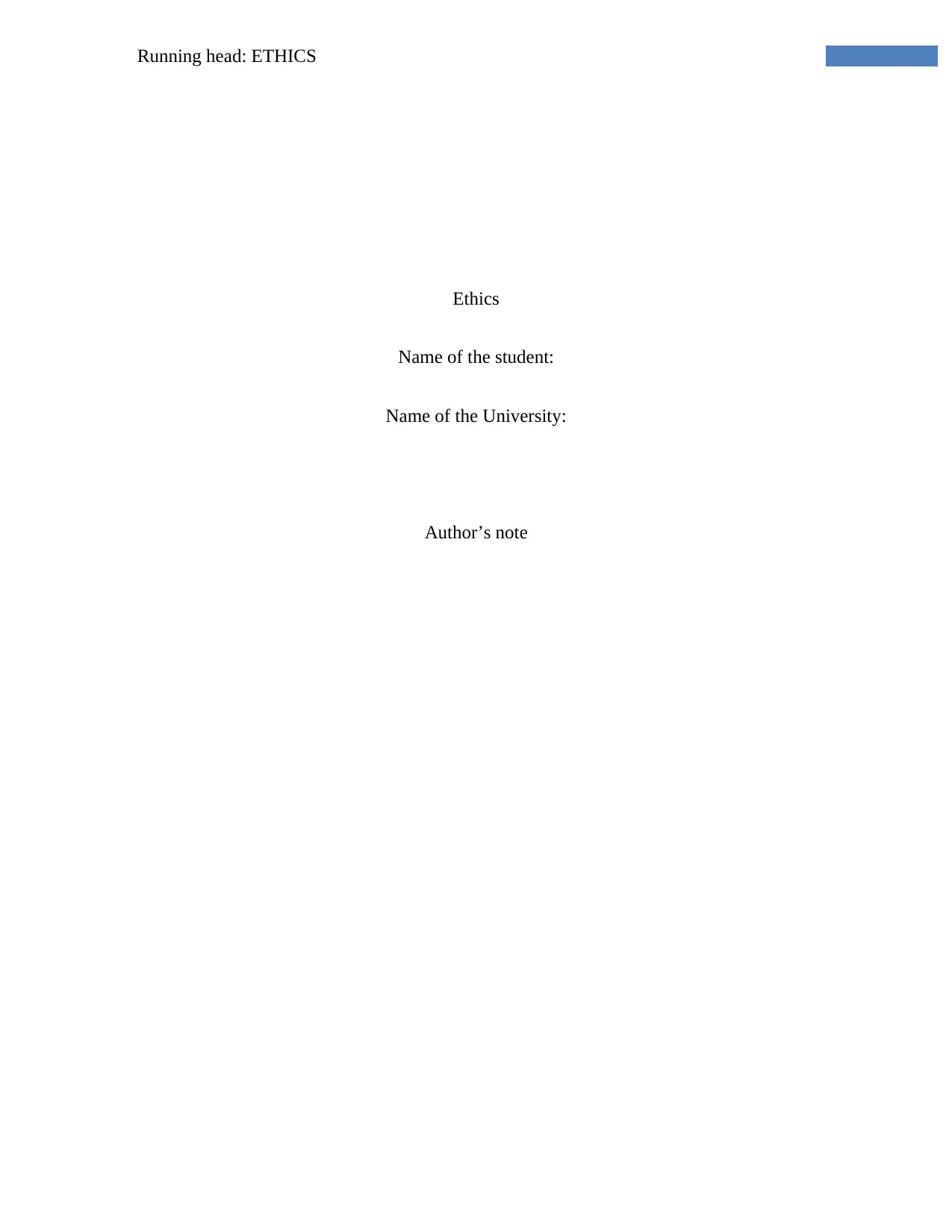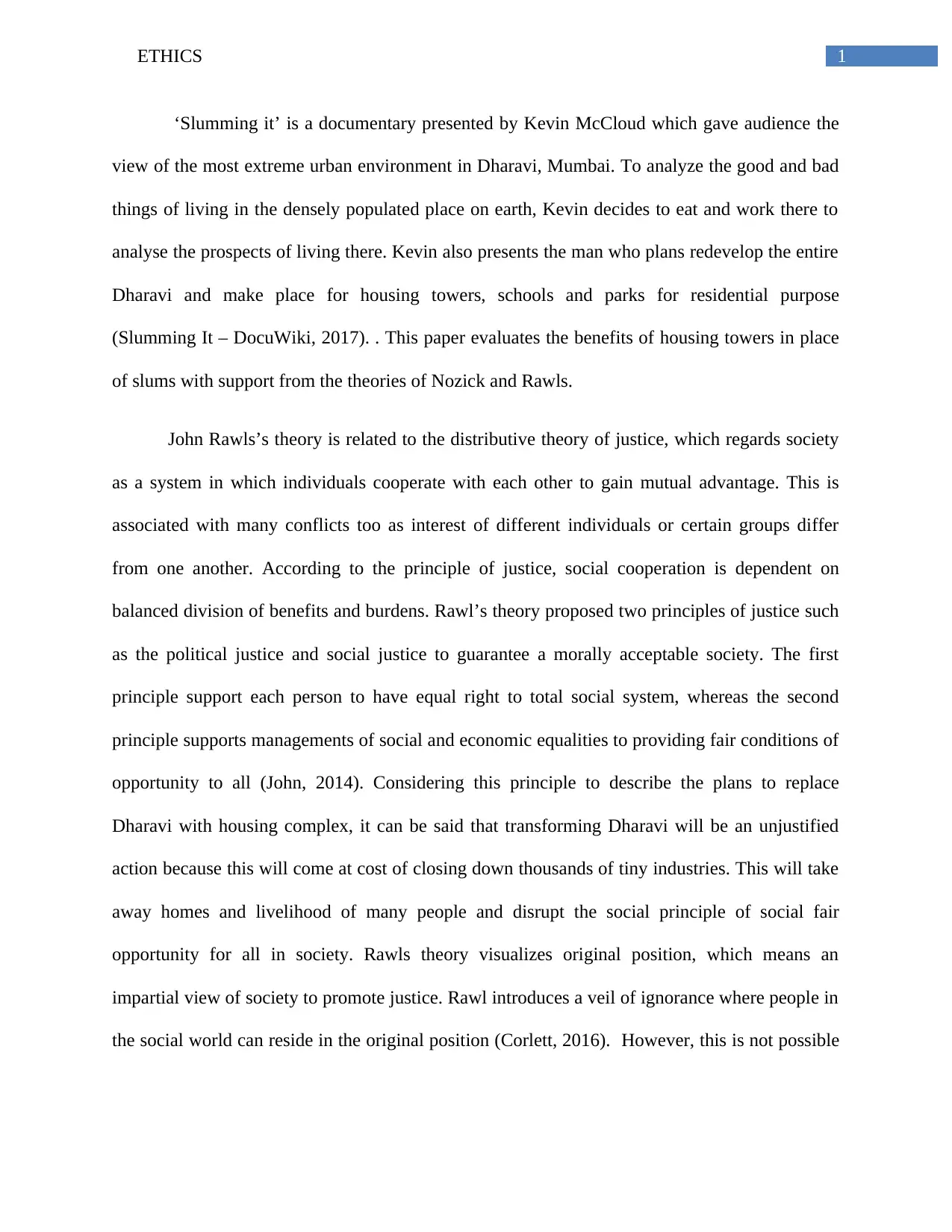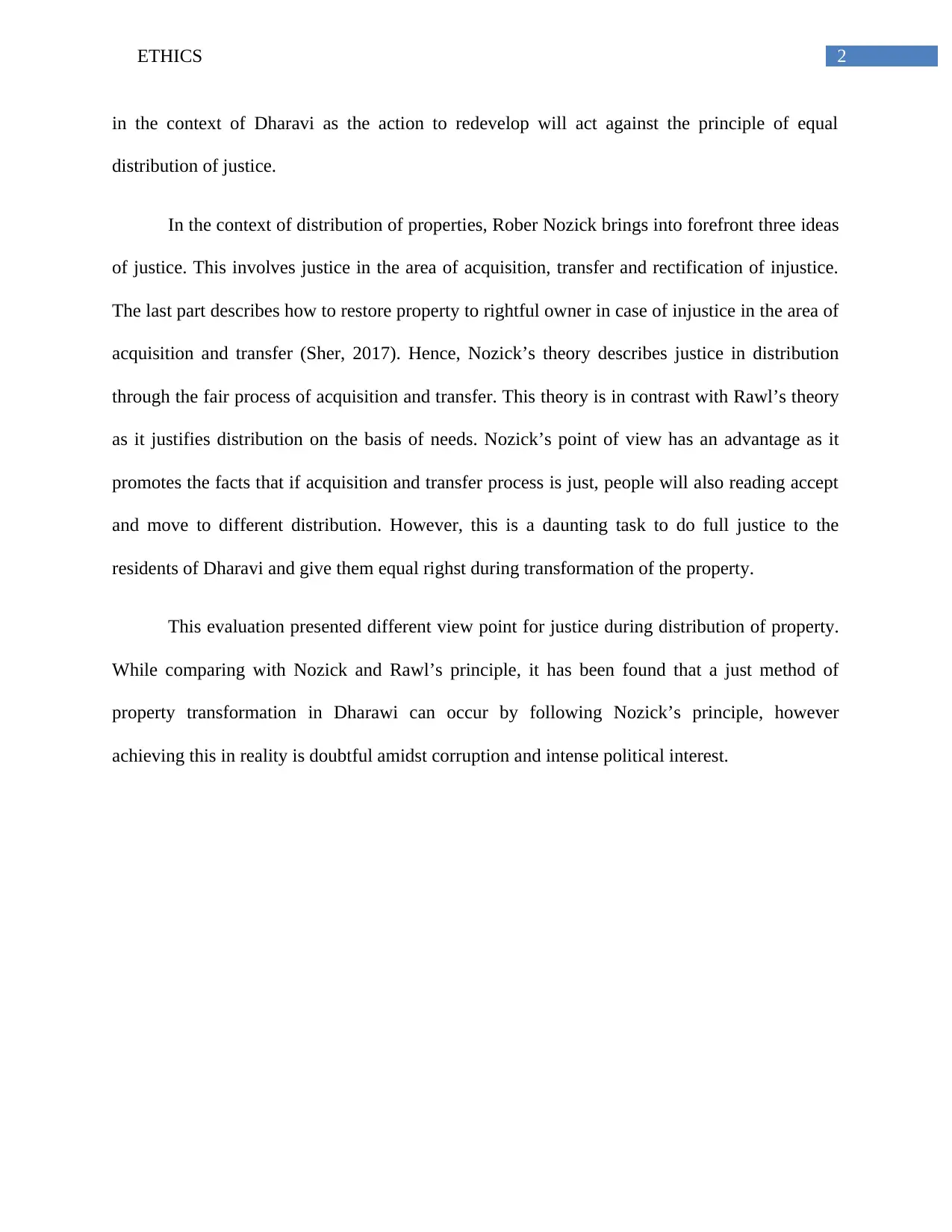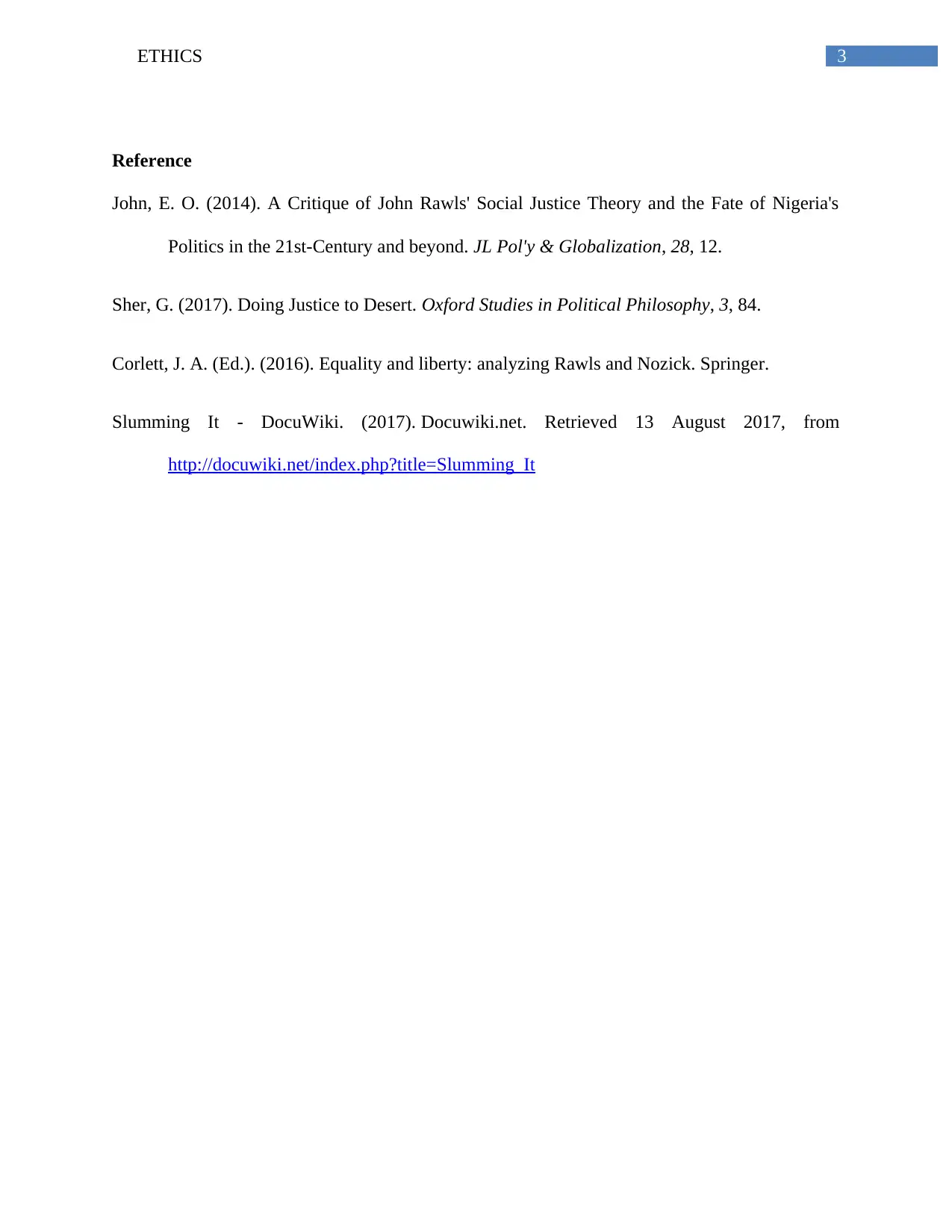Ethics Essay: Nozick, Rawls, and Dharavi Redevelopment Analysis
VerifiedAdded on 2020/03/07
|4
|735
|97
Essay
AI Summary
This essay examines the ethical considerations of redeveloping the Dharavi slum in Mumbai, India, as presented in the documentary 'Slumming It.' The analysis focuses on the implications of replacing the densely populated slum with housing complexes. The essay applies the justice theories of John Rawls and Robert Nozick to evaluate the benefits and drawbacks of such a transformation. Rawls' theory of distributive justice, emphasizing social cooperation and fair opportunity, is used to argue that the redevelopment could be unjust due to its potential to displace residents and disrupt their livelihoods. Nozick's theory, which prioritizes justice in acquisition and transfer of property, is then considered, suggesting that a just transformation could be possible by adhering to fair processes. However, the essay concludes that achieving this in reality is challenging due to corruption and political interests. The essay provides a comparative analysis of both theories to determine the most ethical approach to property transformation in Dharavi.
1 out of 4











![[object Object]](/_next/static/media/star-bottom.7253800d.svg)